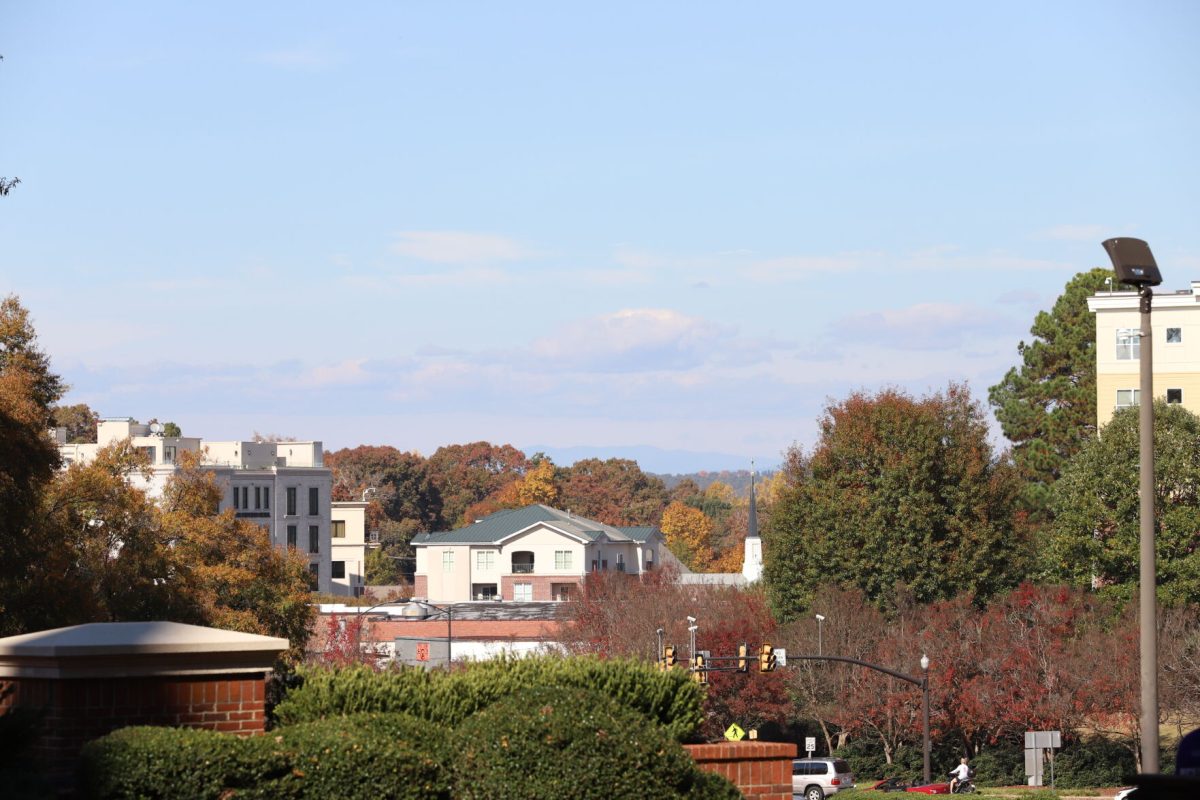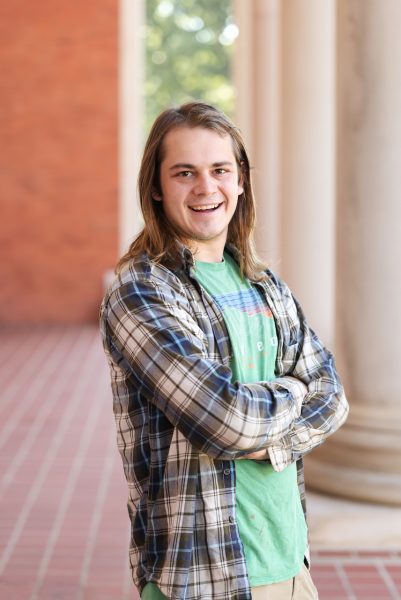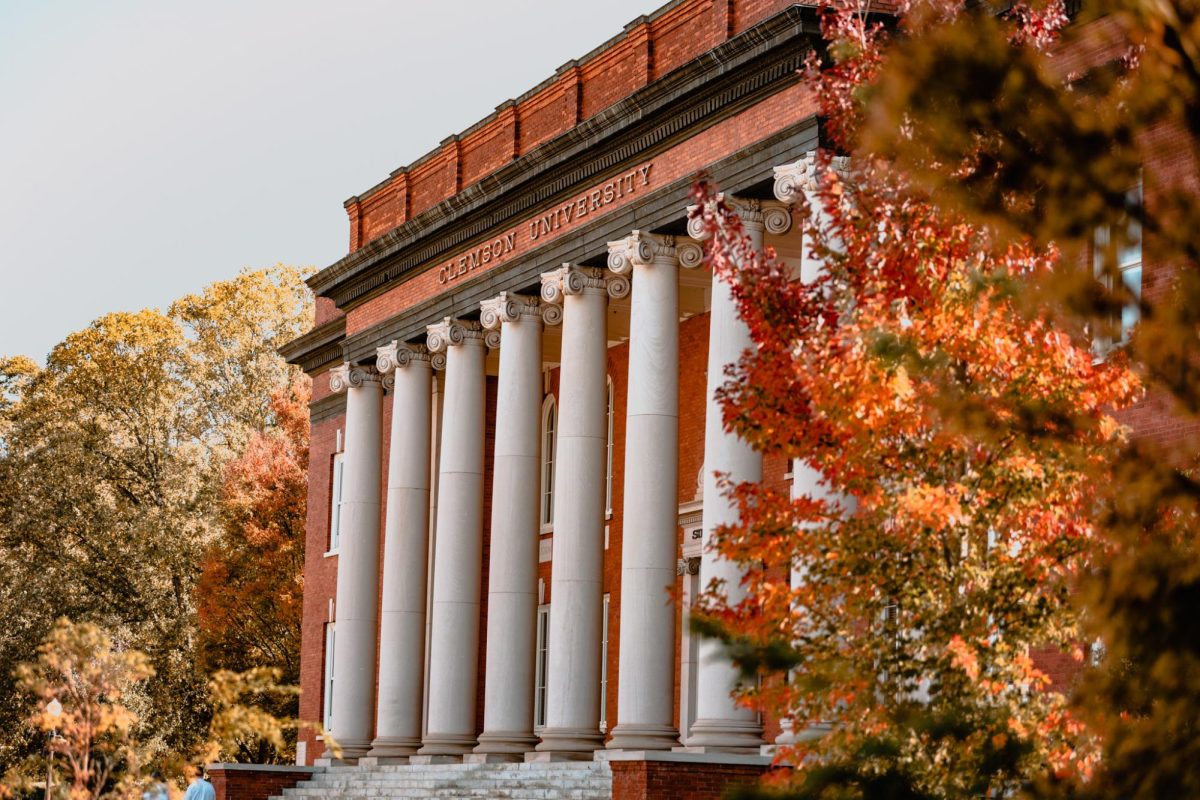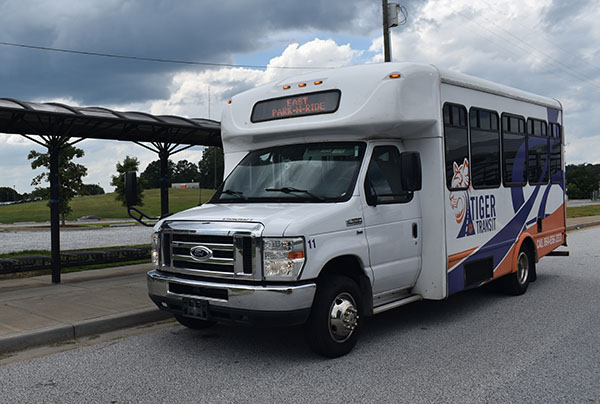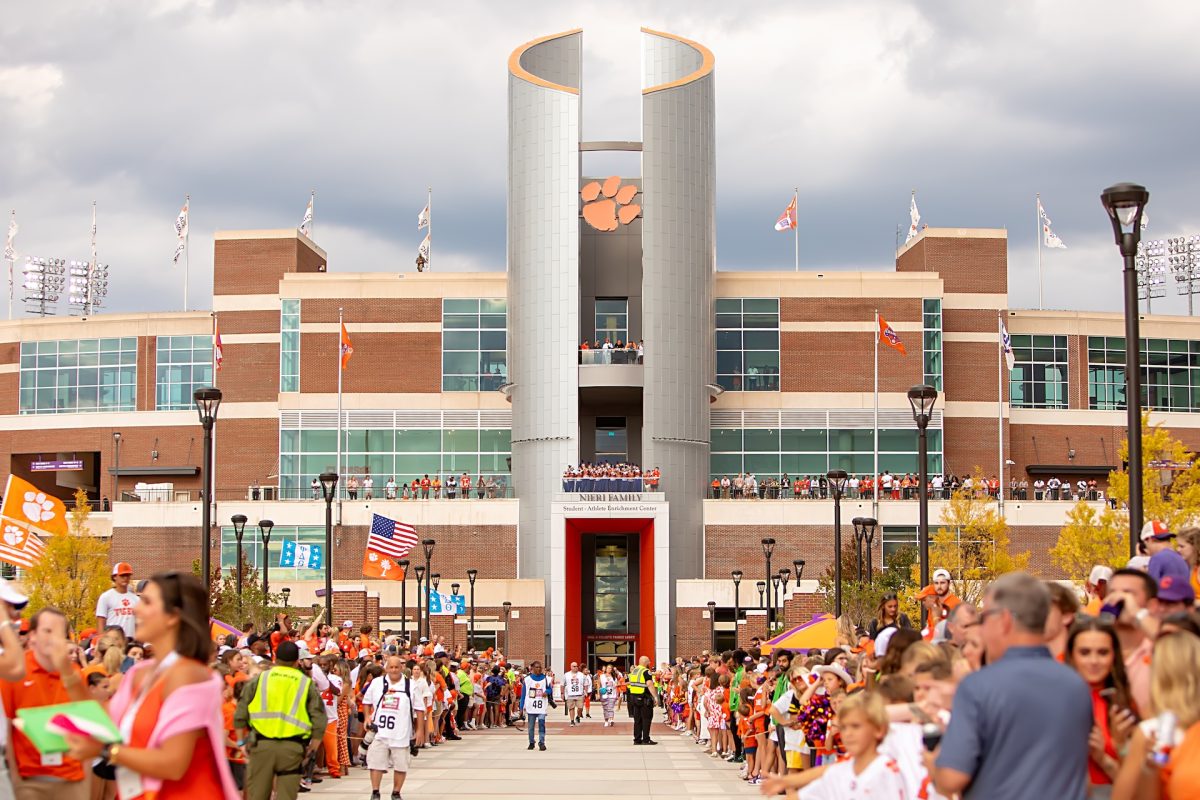As my time draws to a finish here in Tigertown, I often find myself wandering around stomping grounds, new and old, reminiscing about days past. I also find my mind wandering, noticing the changes, cataloging the eras that have occurred over my five years in Clemson.
A lot has changed, but to be fair, a lot happened. COVID-19 rose and fell. The University expanded. The business building finally opened.
When I first toured the campus in the spring of 2018, Wilbur O. and Ann Powers College of Business was a mere pit in the ground. During my freshman year, I spent many long hours sitting at the busy intersection in front of Sikes Hall, and the bricklayers worked through the night, which was a pleasant background to my AutoCAD project.
Now, it stands as one of the foremost academic buildings on campus. Its atrium is a welcome escape from the weather outside without forgoing the open feeling and natural light of the outdoors.
Speaking of the main roads on campus, the gates have gone up on Calhoun Drive, and they refuse to be maintained so cyclists can actually use them. I remember the time before, and it made no difference in traffic, at least to my knowledge, but there they sit.
The Edgar A. Brown University Union has finally been put out of its misery. They told me it would be gone before I got here on my tour, but it only took until the second semester of my fifth year for it to happen.
But its passing leaves a hole. The game room, my haunt of late nights long past, has no replacement. Though this is not much of a problem for me, I worry about the future students whose IDs don’t yet have the magical number on them that grants admission to most of the late-night joys off campus.
Speaking of, bands of boys and girls don’t seem to roam campus after dark in the way they used to. Perhaps this is just me getting older, and perhaps this is a victim of COVID.
Perhaps less a victim of the virus but rather progress, the number of people who talk on their way to class has diminished. When I first started, it felt like more people talked and waved hello while walking. A friendly, casual culture abounded. But I feel so many people walk in their own little worlds, cut off by wireless headphones, a luxury when I started, now ubiquitous.
The most striking thing, however, has been the enforcement of a growing culture of control on the campus by the administration. Students are now required to ask for the right to exist, not only every time they enter any building on campus but anytime they want to enter a classroom.
A welcoming, freewheeling, “do what you want” culture has been replaced by a culture of card swipes, “Have you reserved this online?” and security guards being upset with you for holding a door. This is something the administration has chosen not just to hold over from COVID but to reinforce, locking professors behind “secretaries” in new buildings. Many clubs on campus have had their spaces removed, advisors fired and either cast out on their own or brought under the tight grip of university bureaucracy.
Perhaps the best example is what has happened at the Snow Family Outdoor Fitness and Wellness Complex, which went from an open amenity — a place where the community and college mixed — to a place where you must have a student parking pass to access, even if you are a student who doesn’t park on campus.
This is indicative of a college that seems increasingly at odds with the broader town community on all sorts of issues, from student housing to law enforcement. However, the most profound issues are the closure of campus, the locking of the buildings, the exclusion of visitors and pushing the visitors’ center off campus. A college that is consciously alienating itself from the community and state that led to its creation.
The town is not innocent either. It is locked within a struggle between those who accept the community’s new role as a small city rather than a small town and those who are committed to providing massive resistance to change.
Another way the culture has changed is the increasing number of out-of-state students. In-state enrollment has been relatively constant, rising from the low 13,000s of undergrads to the high 13,000s over four years, according to Clemson Factbook. Out-of-state enrollment has surged from 6,500 in 2019 to over 9,000 in 2023, leading to an increasingly crowded, less state-focused university.
This data depicts a college more obsessed with out-of-state money and climbing the US News rankings through “better” students while leaving the state in which it was built to serve behind.
But not all is bad. Life is beginning to return to something that resembles life pre-COVID. Library Bridge is once again abuzz after the completion of the new Humanities Hall. Students swamp the green spaces and Bowman Field on nice days. The culture of door-holding has returned despite the administration’s best efforts.
The University’s mortgaging of the past and current loveliness of campus is finally starting to show results, with radical improvements to Perimeter Road, McMillan Road finally opening and improvements around the Samuel J. Cadden chapel and new Suber Dam pond providing some recompense for the trees slaughtered to make way for the new Clemson. I’m sure they will be fantastic in five to 10 years.
Many things have improved, from the first segment of the Green Crescent Trail opening to CORE getting out of their doublewide. Downtown has seen quite a glow up, with new hotels and bars replacing vacant storefronts and old buildings. The crappy strip malls and dilapidated houses along College Avenue have begun to be replaced by student housing and retail, with buildings like Bixby on College bringing powerful vibrancy to College Avenue north of Edgewood Avenue for the first time.
Just as Clemson has changed, so have I. I’ve gone from wearing a braided bracelet and tie dye to a smartwatch and “Sail Lake Hartwell” T-shirt, so maybe it’s always been this way, and I’m just seeing it from a different side. Five years will change us all. But I’ve seen some of the best things about Clemson quashed, and a surprising number persevere.
Clemson is still Clemson, despite the best efforts of the world and the administration.
Corey Glenn is a senior civil engineering major from Aiken, South Carolina. You can reach Corey at [email protected].



